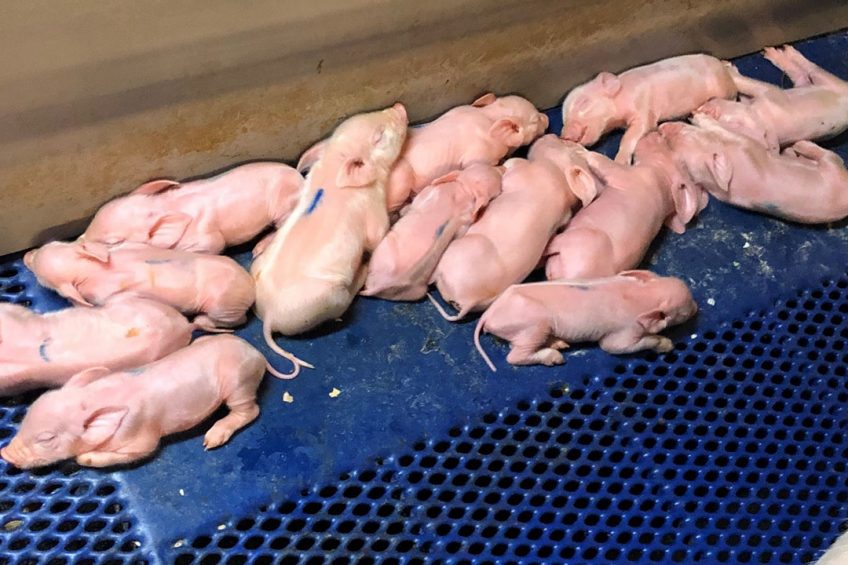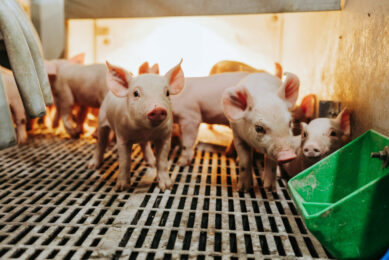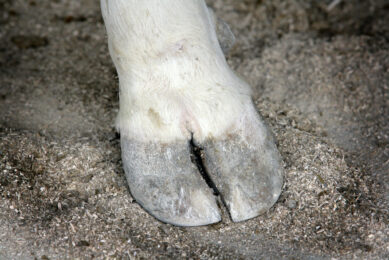Prudent antimicrobial use: The best to boost productivity

Farmers all over the EU are working hard to reduce the use of antibiotics in animal production. Although this change takes time and has an economic cost, some of the results may be unexpectedly good. Health and nutrition expert Edgar Garcia Manzanilla shares promising ideas and conclusions presented by Irish farmers.
A couple of weeks ago I attended one of those meetings where farmers show their ability to adapt to change and to lead by innovation. Ireland received a visit from a group of experts from the European Commission to assess progress on the area of prudent antimicrobial use and, as part of the presentations to the experts, there were 3 farmers that had drastically reduced their use of antibiotics, a poultry farmer, a cattle farmer and ‘John’, a pig farmer running a 1,600 sow farrow-to-finish operation. Very rarely you will find so much agricultural expertise in a room and some of the learnings must be shared.

Read more about pig health in the Pig Progress Health Tool
“We would never go back to the previous situation”
This sentence was said by the poultry farmer in his presentation and was subscribed by the cattle and the pig farmers with no reservations. They all agreed on how much of an improvement they have observed in their farms by getting rid of regular use of preventive antibiotics.
Indeed, all of them also agreed that this is not something that can be done in a couple of months. In all cases the change took over 2 years. Another point where all agreed is that it is not a cheap change and some investment needs to be done, especially at the beginning of the process after a serious assessment of the situation. However, it was worth the efforts for all of them.
A complex problem requires complex solutions
As I explained in a previous Expert Opinion, antibiotic reduction is a complex issue and one simple change will not be enough in most cases. John’s farm is a good example of the sort of changes that are commonly needed to reduce the use of antibiotics in a pig farm… Biosecurity, hygiene, nutrition, education. Let’s discuss some of the solutions adopted.
A healthy homogeneous litter for a good start
In recent years, most farms have increased litter size, often increasing also the number of small sick piglets. These piglets create problems during the whole production cycle. If you have this problem in your farm, you may want to address it before you start reducing the use of antibiotics.
A change in genetics may be an option. It worked for John and it may work for you. All modern genetics have good performance, but you need to find the one that matches your strategy. Calmer pigs, good mothers and more homogeneous litters can make a big difference.
Hygiene, internal biosecurity and vaccination are key
These 3 points are probably your best friends to reduce the need for antibiotics.
1. Cleaning: take a moment to review your cleaning and disinfection protocol. This area has progressed in a big way recently. Look for new products, the right sequence and always apply the right time to ensure inactivation of pathogens.

2. All-in-all-out: in this case I will just refer to the previous Expert Opinion to make sure you are doing it right. It is easy to do all-in-all-out wrong once you get absorbed by the daily routine.
3. Vaccines. As John says, you will expend as much in vaccines as you are expending on antibiotics, however it is a much better investment for your money. In his case, John introduced flu and ileitis vaccines but, of course, this will be different in each case.
Antibiotics are a human issue after all
As for many other complex issues, reducing antibiotic use involves convincing humans that there is an alternative approach with a better result. However, improvements are not immediate. Vaccines will take a while to create herd immunity… Cleaning will progressively reduce bacterial load… and then one day all starts to improve. It is a bit of a leap of faith.

No more antibiotics, no more zinc oxide – in Denmark this summer the Zero Zinc Summit was organised. Read the review
And as for any change, there will always be some resistance. It is human nature. “Why are we cleaning this much?”, “What do I need this training for?”, or “When are we going to see the improvement?”, were common questions that John got from his staff.
Now, they would not go back. Life is much easier.
If the results don’t convince you, nothing will
And after all these changes, 2 years later, here are some of the results:
- No in-feed antibiotics or zinc oxide;
- Weaning weight up from 6.6 to 8.0kg;
- Daily growth up from 765g/day to more than 800g/day from weaning to sale;
- Lower workload and farm staff more satisfied with the job;
- Better animal health and welfare.
Are you up for the challenge?











